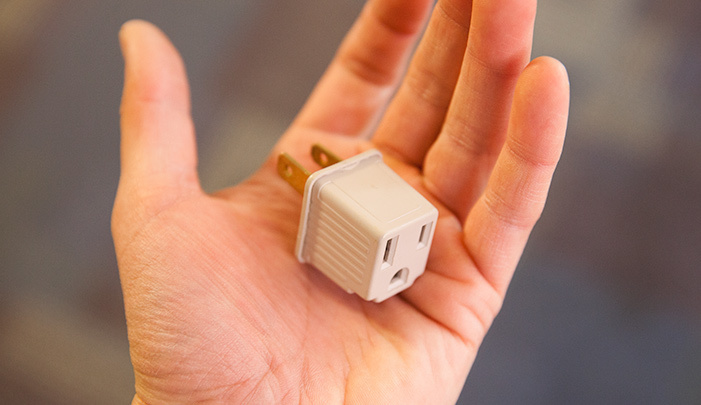When doing a documentary-style video production, an interview or series of interviews is often at the heart of the content. Uncontrollable lighting, background noise, and the size of the space you have to work in all play a significant role in capturing a quality testimonial, so location scouting to check on these is an important facet of our production process. In this short video, Joshua Pardon and I explore two rooms at a location and discuss what we look for when making a decision on where to set up for a shoot.
Our objective when scouting locations for interviews is to pick a space with a good looking background, give us control over audio, offer plenty of space to work in, and provide easy access for our gear and crew. Whenever possible, we scout locations ahead of time to be sure that they will work for our needs, and we like to take reference stills as well. Below are some of the things we look for.
Selecting an Appropriate Background
Our background look will always be determined by the type of content we are shooting, so if corporate, we might go for an office look, if educational we might use a bookshelf or classroom, etc. In some cases, a muslin backdrop can be a good choice when no better options exist, or if we wanted to go for something simpler or more dramatic. The aesthetics of a room do play a role in our decision, but in some projects this is less important than getting a clean audio recording. In some cases we’ll only see the interviewee on camera for a few moments, but we will hear them for much longer, so audio becomes a more important consideration.

Three different interview settings; historical, dramatic, and industrial.
Audio is the Most Important Part of your Interview
Controlling audio is paramount. We look to select a room that has little echo, no noticeable noise from nearby machinery or appliances, and can offer privacy during the shoot. Proper mic placement can help reject unwanted background noise, but a room with flat, hard-surfaced walls will create too much bouncing audio. It might be worthwhile to bring in a few sound blankets to help reduce noise from nearby doors, or breakup sound that's reverberating around the room.
If there might be noise from roads near the building, people walking around outside the room, air units, bathrooms (toilets flushing in your audio track don’t go over well with most clients!), then it may be worthwhile to explore other areas, or do what you can to film during a time when audio interruptions will be at an absolute minimum.

Can the Lighting be Controlled?
When looking at a space with lighting in mind, 9 times out of 10 we expect to setup or own lights and minimize, if not completely eliminate, the natural lighting. This means that it is important to find out how the natural lighting can be controlled. It could be a simple switch, but some rooms have dimmers. In large industrial spaces, light switches might control entire banks of lights, so you might have to get creative with flags or overpower them with your kit.
Rooms with windows that have blinds or shades will still usually let a small amount of light spill in, so plan your kit for your shoot accordingly based what you find. If you can’t completely block out daylight spill for example, you might want to have CTB gels or bi-color lights in your kit to match the color.
Don’t forget to check on outlets! Older buildings especially can be a pain as they don’t always have outlets where you need them, and they might not be grounded. Keep a few grounding adapters in your kit, as well as a few long stingers (extension cords) to handle this.

Setup and Strike with Ease
One of the last things we consider is accessibility. Is there enough space to spread out gear and crew comfortably? Will loading in/out be a pain? If the location is on another floor, is there an elevator that can be used? Where is a good place for makeup to be done, or for people to wait their turn to be interviewed?
Little things like the above can make for a much smoother production day, but shouldn’t come at the cost of having to make concessions on your audio or lighting. If renting a room for a few days at a library or community center, it might be worth it to to rent a second room to use as a green room for talent and clients.
If you want to learn more about location scouting and how to produce documentary style interviews, check out our e-book, Tips for Shooting Professional Video Interviews.






Nice read
Good article. I live in a rural area and have no problem with the sound of traffic, people walking outside, or police sirens etc when I record at home.
However, I find I cannot record indoors in daylight hours due to the continual sound of cheeping birds outside! So I wait until night time, after the birds have gone to sleep.
I always bring a Lion or other large predator on the set for that, it quiets the birds right down.
It's a great article.